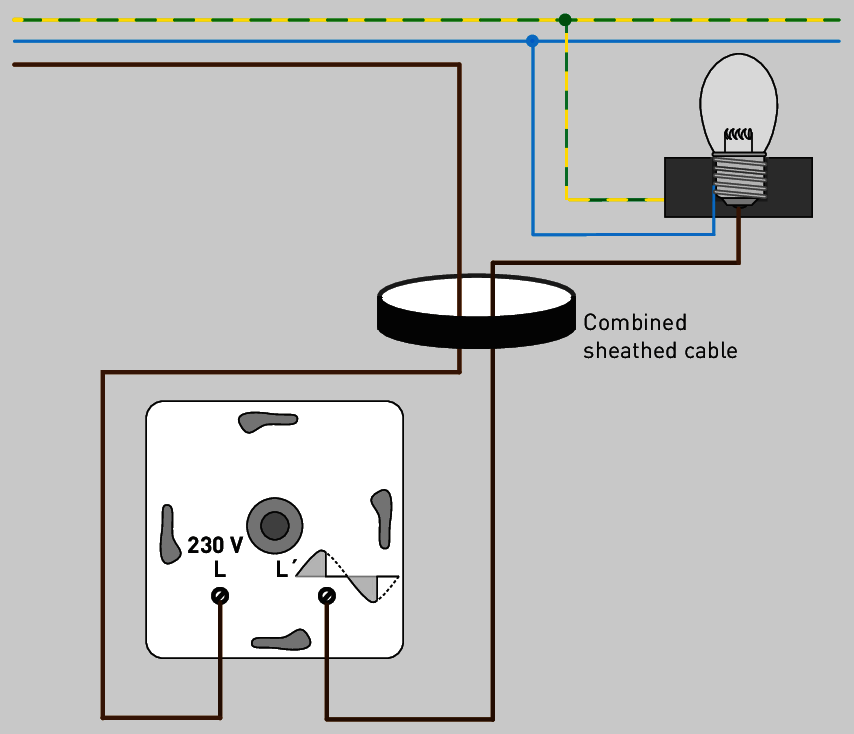Due to the frequency of 100 Hz and the lamp’s inertia in heating up and cooling off the filament, the eye does not perceive light flicker. In the present context, this method cannot be called an interface in a narrower sense, since there is no transmission of information, but rather a manipulation of energy supply (see figure).
Many power supplies for LED bulbs, however, today offer besides dimming with e.g. the DALI interface also a dimming operation with phase control or phase section. In such cases, the control gear unit evaluates the incoming signal to in turn operate the light source in a dimmed state (see chapter "LED luminaire operation"). Based on leading or trailing edge phase cutting, the power supply to the control gear unit is intermittent.
